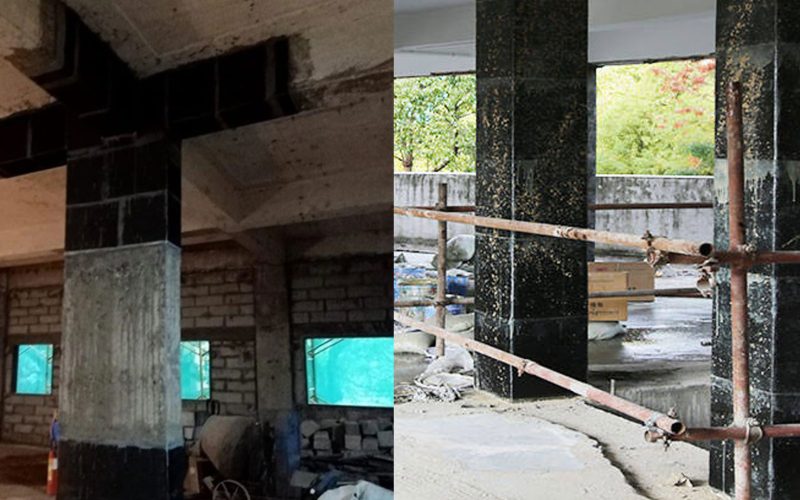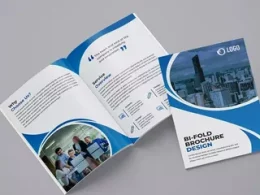India’s infrastructure sector is growing, yet many older buildings and bridges are in urgent need of structural improvement. With rising urban demands, the pressure on concrete columns—especially in decades-old structures—is higher than ever. Cracks, reduced load capacity, and seismic vulnerabilities are common. In such scenarios, carbon fibre column strengthening emerges as an efficient and cost-effective retrofitting solution. For Indian property owners, this method ensures long-lasting safety without the expense of reconstruction.
The Indian Context: Why Retrofitting Is Urgent
India has numerous buildings constructed before modern structural codes came into existence. Many were not designed for today’s dynamic loads or seismic activities. Over time, factors like corrosion, poor maintenance, and overloading weaken these structures. Especially in metro cities like Delhi, Mumbai, and Kolkata, the burden on aged infrastructure continues to grow. Hence, building owners and government agencies are increasingly searching for solutions like carbon fibre column strengthening to reinforce structural integrity affordably.
What Is Carbon Fibre Column Strengthening?
Carbon fibre column strengthening is a retrofitting method that involves applying high-strength carbon fibre fabric or sheets to existing concrete columns. These materials are bonded using specialized resin systems to form a composite that enhances strength, ductility, and load-bearing capacity. The method works without altering the geometry of the columns. Because it is lightweight, corrosion-resistant, and easy to apply, it has become a preferred choice for Indian engineers seeking quick, cost-effective results.
Key Benefits for Indian Structures
This method offers multiple advantages, especially in the Indian climate and construction landscape. Firstly, it requires minimal surface preparation and does not generate construction debris. Secondly, carbon fibre column strengthening does not increase the cross-sectional area of columns, saving space—critical in congested Indian cities. Additionally, it resists corrosion, which is vital in coastal and humid areas. The speed of application and lower labor costs make it an attractive alternative to traditional steel or concrete jacketing.
Applications Across Residential, Commercial, and Public Buildings
From residential buildings to industrial plants and hospitals, this technique has wide-ranging uses in India. In old apartment complexes, it can help stabilize structures without displacing residents. In commercial properties, it ensures safety while business continues uninterrupted. Even public infrastructure like schools, bridges, and government buildings can benefit from carbon fibre column strengthening, especially when budget constraints limit the feasibility of complete overhauls. As Indian infrastructure ages, demand for such versatile solutions will only increase.
Retrofitting vs. Rebuilding: A Cost Comparison
Rebuilding a structure is expensive and time-consuming. It also involves securing new permits, arranging temporary relocation, and creating fresh waste. In contrast, carbon fibre column strengthening allows engineers to enhance structural safety within existing buildings. This technique requires fewer materials, less labor, and causes minimal disruption. For Indian property owners seeking low-cost alternatives that deliver high-strength performance, retrofitting stands out. It maximizes return on investment and extends the life of concrete columns without massive capital expenditure.
Step-by-Step Retrofitting Process
The process begins with an in-depth structural assessment. Engineers identify which columns need reinforcement and determine the severity of damage. Surface cleaning and crack sealing come next. Then, the carbon fibre fabric is cut and wrapped around the prepared column. Resin is applied to ensure a secure bond. Once cured, the column exhibits enhanced strength and resilience. This process is well-suited for India’s diverse building types, especially in retrofitting older government, educational, and commercial establishments.
Seismic Strengthening: Essential in Indian Zones
India’s earthquake-prone zones—like parts of Himachal Pradesh, Gujarat, Assam, and Uttarakhand—demand retrofitting strategies that boost seismic resistance. Traditional concrete columns often fail during tremors due to their brittle behavior. Carbon fibre column strengthening helps absorb seismic energy and prevents structural collapse. It increases ductility and confinement, making buildings safer. Indian engineers and policymakers are now encouraging the use of this technology in earthquake-prone areas to protect lives and infrastructure effectively.
Long-Term Durability and Maintenance Benefits
A major advantage of carbon fibre column strengthening is its long-term performance. Once installed, the material resists corrosion, chemical exposure, and temperature variations. It doesn’t require painting or coating. For Indian cities with high pollution or salinity levels, this low-maintenance feature is a significant benefit. Regular inspections every few years are usually sufficient to ensure continued performance. Compared to steel jacketing, which may rust and require periodic repair, carbon fibre remains highly stable for decades.
Sustainability and Environmental Impact
Sustainability is a major focus in Indian construction today. Reducing material waste, minimizing energy consumption, and lowering carbon emissions are vital. Carbon fibre column strengthening aligns perfectly with these goals. It helps extend the life of existing buildings without demolition, thereby reducing construction waste. The process also consumes fewer resources and emits less CO₂ than rebuilding. For environmentally conscious builders and government bodies, this method serves as a sustainable and responsible engineering solution.
Choosing the Right Service Provider in India
Quality execution is essential for the success of carbon fibre column strengthening. Indian users must choose experienced contractors who follow proper procedures, use certified materials, and adhere to design codes. Ask for portfolios, site references, and test reports before signing any contracts. Some Indian firms now specialize in this technique and offer turnkey services. Whether retrofitting residential societies, commercial hubs, or heritage buildings, choosing a reliable provider ensures safety and long-term performance.
Comparing with Other Retrofitting Methods
Various retrofitting options are available—concrete jacketing, steel casing, and external bracing among them. However, many of these increase column size or add dead weight. Carbon fibre column strengthening, in contrast, offers superior strength-to-weight ratio. It’s also more flexible and easy to install in constrained areas. For Indian property owners dealing with tight timelines or spatial restrictions, this method provides unmatched advantages. Its combination of speed, strength, and aesthetics makes it a top contender.
Use in Heritage and Aesthetic-Sensitive Structures
India’s historical buildings and religious structures often need strengthening without visible alterations. Carbon fibre column strengthening allows preservation of original architecture while enhancing safety. The material is thin, invisible after finishing, and doesn’t affect design elements. Temples, mosques, churches, and colonial-era buildings have successfully used this method to meet modern safety standards without compromising their heritage value. Indian conservation engineers increasingly rely on this technique to strike the balance between safety and visual integrity.
Training and Awareness in the Indian Market
Despite its advantages, the widespread adoption of carbon fibre column strengthening still faces barriers. Limited awareness, lack of trained professionals, and initial investment concerns are some hurdles. However, Indian institutions and government bodies are now conducting training programs, workshops, and pilot projects to bridge the knowledge gap. As more engineers, architects, and builders understand the long-term benefits, this technique is expected to see broader adoption across metro and non-metro regions alike.
Real-World Success Stories from India
Several projects across India have shown how carbon fibre column strengthening delivers strong and lasting results. In Hyderabad, a commercial office retrofitted its basement columns to support additional parking floors. In Ahmedabad, an old hospital strengthened its core columns without disturbing operations. In Kochi, a coastal school used carbon fibre to restore earthquake readiness. These stories reinforce the method’s suitability for Indian environments and provide case studies for future applications.
Future of Carbon Fibre Retrofitting in India
India’s infrastructure growth is not just about new buildings—it’s also about preserving and upgrading the old. Carbon fibre column strengthening is set to play a key role in this transformation. As building codes evolve and sustainability becomes central to planning, this method will gain further relevance. Ongoing innovations will reduce costs and improve accessibility. It represents the future of smart, efficient, and environmentally sound structural repair in the Indian context.
In today’s India, strengthening concrete columns without large-scale reconstruction is not just a preference—it’s a necessity. Carbon fibre column strengthening offers a practical, cost-effective, and durable solution tailored for Indian conditions. From enhancing load-bearing capacity to improving seismic safety, it meets the evolving needs of residential, commercial, and public structures.












